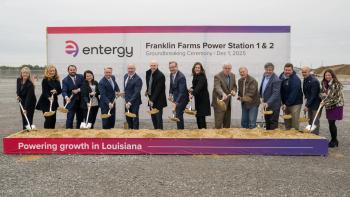
GE to supply 46 gas turbines across Egypt
GE has signed contracts with the government of Egypt to deliver 2.683 GW of electricity, and supply a total of 46 gas turbines across eight sites. The electricity provided is expected to be equivalent to more than 2.5 million homes. The seven LM6000-PC, seven LM6000-PF and 20 TM2500+ aeroderivative gas turbines and 12 9E.03 gas turbines were packaged in Houston, Texas, U.S.A. and Veresegyhaz, Hungary.
The contracts were signed in December of 2014 and construction is currently underway. Power is expected to be delivered in May, in time to help meet the soaring demand for electricity during summer.
GE maintains an inventory of gas turbines in Houston and Veresegyhaz to facilitate urgent customer needs. The company delivered 50 units to Algeria on a fast-track basis between 2012 and 2014. In 2014, GE shipped four TM2500+ aeroderivative gas turbines in Mexico to help restore power after Hurricane Odile. The units were providing power 11 days after the contract was signed.
Trailer-mounted turbines
Lorraine Bolsinger, president and CEO of GE Power & Water – Distributed Power said the installations include substations, switchyards, commissioning, startup, all the balance of plant, integration with the grid and handing over the keys. Trailer-mounted turbines like the TM2500+ are important in what Bolsinger calls a “frontier strategy” employed by some emerging-economy countries in locations where it not yet feasible to put in large central power plants.
Bolsinger said many customers are considering the trailer-mounted units as a flexible, first-power-on option that doesn’t need a lot of infrastructure. “How long they stay there depends on how quickly the infrastructure gets put in place – the grid, a combined-cycle plant. When those are built out, they can move the trailer-mounted units to the next frontier.”
In Egypt, GE said its gas turbines help generate more than 9.5 GW of electricity, nearly 30 percent of the country’s total installed capacity. According to the Oxford Business Group, Egypt’s power generating capacity must be scaled up to 50 GW by 2025, nearly double the capacity today, with demand growing at an annual 10-12 percent.
Newsletter
Power your knowledge with the latest in turbine technology, engineering advances, and energy solutions—subscribe to Turbomachinery International today.





